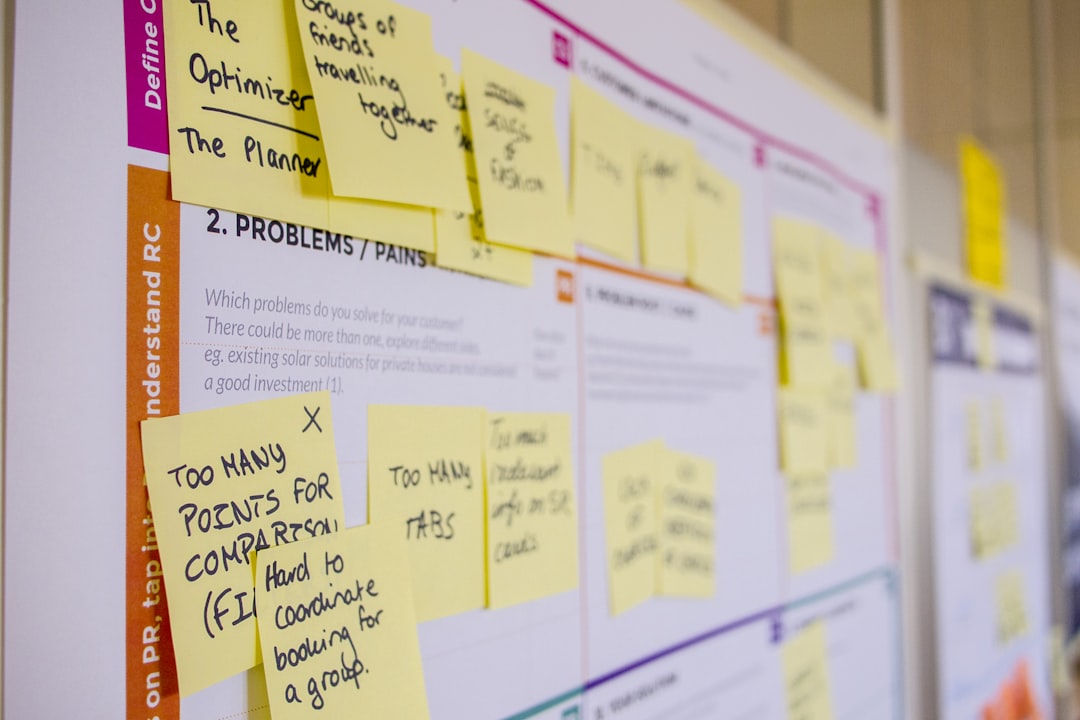Unveiling the Evolution of Corporate Intelligence Total Intelligence Solutions' Approach in 2024
Unveiling the Evolution of Corporate Intelligence Total Intelligence Solutions' Approach in 2024 - AI-Driven Insights Reshape Corporate Decision-Making
In today's dynamic business world, AI-powered insights are becoming central to how organizations make decisions. This isn't just about making better choices; it's about fundamentally changing how decisions are made. We are now at a point where companies need to seriously consider how humans and AI will work together, and which decisions are best left to algorithms.
This shift is fueled by AI's ability to analyze massive amounts of data in real-time, enabling quicker responses to market shifts and unforeseen events. Companies can build a more robust and adaptable approach by understanding the 'now' and using AI to adjust their goals and strategies.
Furthermore, as AI increasingly influences decision-making, the traditional roles and responsibilities within organizations, including at the highest levels of leadership, are being questioned. This scrutiny is necessary as we move towards more automated decisions, which have both technological and social implications. This rethinking is partly responsible for a renewed focus on optimizing business processes. AI's ability to improve efficiency and optimize resource allocation is a key driver in this trend, pushing organizations to reimagine how they operate.
The integration of AI is fundamentally altering how businesses approach decision-making, moving beyond traditional methods. It seems that AI-powered systems can significantly speed up decision cycles, potentially leading to decisions being made 5 times faster compared to relying solely on older analytics methods. This accelerated pace offers a distinct advantage in today's rapidly changing environment.
Interestingly, early evidence suggests that the financial gains from using AI for business insights can be substantial. Some sectors report revenue increases of 15-20% within the first year of integrating AI. This suggests a strong correlation between employing advanced analytics and improved financial performance, though we must be mindful of isolating other contributing factors.
Another intriguing area is the ability of AI to uncover market trends that might otherwise be missed. A significant portion of corporate executives believe that AI aids in identifying previously unseen trends, which potentially grants a competitive edge. This observation highlights the power of AI to sift through vast amounts of data to find patterns and insights humans might overlook.
Furthermore, AI has the potential to reduce human bias in decision-making, a factor that has long been a challenge for traditional approaches. Research suggests that AI-driven decision processes can reduce bias by up to 30%, implying a shift towards more objective and fair strategic planning. However, we must remain critical, as the potential for bias within the AI systems themselves remains a crucial consideration.
The ability to leverage real-time data is another prominent benefit. Many business leaders now rely on AI to utilize real-time data, enabling swifter responses to market changes compared to traditional static reporting systems. This responsiveness could be critical for companies operating in volatile markets.
Besides its impact on decision-making, AI is also influencing organizational dynamics. By automating tedious data tasks, AI can contribute to increased employee satisfaction, allowing teams to concentrate on higher-level, strategic tasks. Studies show a positive correlation between AI adoption and employee satisfaction, although the specifics of this link require further exploration.
The effects extend to cost efficiency as well. Companies adopting AI for insights have seen reductions in operational costs by as much as 10% within a couple of years. Streamlined processes and optimized resource allocation appear to be significant contributors to this cost reduction, yet again we must be cautious in assigning causality solely to AI.
It's estimated that by 2025, AI might be influencing about 30% of corporate decisions. This shift underscores how AI is poised to fundamentally redefine leadership and strategic thinking in the corporate world. While promising, it's important to carefully evaluate the consequences of AI taking on a more significant role in strategic decision-making.
The predictive power of AI-driven analytics also deserves attention. Models using AI seem to improve forecasting accuracy by up to 50%. This heightened accuracy could lead to more efficient resource management and better strategic planning. The question then becomes, how trustworthy are these forecasts in the face of unforeseen external factors.
Finally, we see the impact of AI-driven insights in optimizing customer interactions. Many companies report improvements in customer retention, with some seeing increases of up to 25%. This enhancement can be attributed to more precise and personalized customer interactions driven by insights gleaned from AI. However, there is a balancing act to consider in the pursuit of these insights: data privacy and the ethical considerations of AI's role in customer interactions.
In essence, AI is presenting a new paradigm for business decision-making. Its benefits range from increased speed and efficiency to improved insights and optimized operations. However, it's crucial to approach these developments with a critical eye, understanding the potential limitations and biases inherent in any system, while remaining aware of the complex ethical considerations that AI raises in the context of corporate governance and societal impact.
Unveiling the Evolution of Corporate Intelligence Total Intelligence Solutions' Approach in 2024 - Mobile BI and Data Automation Drive Market Growth
The mobile business intelligence (BI) market is experiencing significant growth, with predictions of reaching $6.376 billion by 2032, up from $3.198 billion in 2024. This expansion is driven largely by large companies adopting these tools as data analytics capabilities advance. Ensuring data quality and security has become a top concern as BI strategies develop. The growing trend towards data automation, utilizing machine learning and AI, aims to improve efficiency and, hopefully, accuracy in BI tools. This means organizations are looking for ways to automate the process of extracting insights from data. The move toward greater automation brings with it new issues, though. Ensuring proper data governance is crucial to maintaining data integrity and trust in the results. Furthermore, the potential for bias within AI-driven BI systems needs careful consideration, requiring a healthy dose of skepticism and a focus on transparency. As the field evolves, these factors will continue to shape how mobile BI is used and its impact on decision-making.
The mobile business intelligence (BI) market is expected to significantly expand, with estimates suggesting it could more than double in size by 2032. This growth likely reflects a broader shift towards readily available information, allowing decision-makers to access real-time data wherever they are. It's intriguing to see how this trend is reshaping how businesses operate, but it remains to be seen if this growth is sustainable and what the long-term consequences might be.
A notable focus in the BI space is the emphasis on data quality and security. It makes sense that high-quality and secure data would be vital for effective BI strategies, yet it's a bit concerning how much attention this aspect is receiving. Are the concerns warranted or just hype?
Looking further out, it's projected that generative AI will play a larger role in the development of web and mobile applications, including BI tools. It seems logical that AI tools could automate some of the design and development tasks, but will the results be what users want? Will there be unforeseen consequences?
IDC research suggests a strong link between having a high "enterprise intelligence" score and a positive impact on decision-making. This makes sense, but it also raises questions about the precise factors contributing to these "high scores" and how they can be reliably measured and implemented.
The adoption of BI solutions by large companies seems to be on an upward trend. It's predicted that nearly a third of big businesses globally will adopt BI solutions by 2024, a notable increase compared to 2020. It's important to consider if this growth is driven by genuine need or by broader trends within the technology industry.
The market for decision intelligence solutions is predicted to become much larger, reaching an estimated $22.7 billion by 2027. This highlights the increasing focus on embedding data-driven practices into decision-making processes. However, there is still a degree of uncertainty about how effective these practices are and how the real world will adapt to a more data-driven approach.
Large enterprises are a significant driver in the mobile BI market, benefiting from advances in BI and data analytics tools. It makes sense that large organizations have more resources to invest in these technologies, but it's worth wondering about how these developments might impact smaller organizations. Could they be left behind?
Data governance is emerging as a key part of maintaining data quality in BI. This is important to maintain the integrity of the data being analyzed, and it makes sense that organizations want to proactively manage this aspect. However, it's an ongoing challenge to establish clear standards and consistent practices across organizations.
BI technologies are trending toward greater automation, driven by AI and machine learning. This will likely lead to more efficient BI tools. The benefits of automation are enticing, but it's worth keeping in mind the potential drawbacks of this approach. How will human expertise be maintained and integrated with automated systems?
Companies like Google and Alibaba are investing in research and development for data intelligence. This competitive landscape likely will lead to innovation, but it's important to consider the potential implications of this focus on innovation. Are the benefits to society as a whole, or are they primarily benefiting the companies developing and deploying the technology?
Unveiling the Evolution of Corporate Intelligence Total Intelligence Solutions' Approach in 2024 - New Metric Evaluates Digital Innovation in Enterprises
A new way to measure digital innovation within companies has been developed. It uses text analysis of annual reports from publicly traded US companies to assess the level of digital innovation. This method has identified twelve key areas related to digital innovation, which are then categorized into three broader themes: innovations in digital technology itself, strategies focused on customers through digital channels, and how established industries are adapting to the digital age. It seems that the analysis also highlights the critical role of technologies like AI and large datasets in driving change and innovation within businesses. The research suggests a link between better innovation results and higher GDP, showing that understanding how digital changes impact innovation in a fast-changing economic environment is crucial. Businesses are increasingly operating in a digital world, and evaluating how well their innovation efforts are working is becoming more important. This leads to questions about the long-term effects of these digital innovations on how companies are organized and run. There's a need for critical evaluation of the benefits and potential downsides as these changes continue to reshape business operations.
Researchers are developing a new way to measure digital innovation within companies, primarily using the text found in annual reports of US-based, publicly traded companies. This method seems to hinge on analyzing how companies discuss topics like digital innovation and its impact on their business. It's interesting that they've focused on three specific areas: how companies are innovating with digital technologies, how they're using digital approaches to engage with customers, and how established businesses are using digital strategies to transform their operations.
The study's authors seem to believe that the digital economy, fueled by technologies like big data and AI, has become a central part of how companies are changing and growing. It's not hard to see why they'd think this – digital technologies clearly have the potential to disrupt existing business models and create entirely new ones. The researchers seem to emphasize the idea that digital transformation isn't just about using new tech; it also impacts how companies are managed and how they create value for customers.
One interesting takeaway is that the research indicates a link between successful innovation and economic growth. Specifically, they argue that when companies are able to improve their ability to generate innovative products and readily absorb new technologies, national economies see higher GDP growth. That makes sense, but it's difficult to isolate just how much of the effect comes directly from corporate innovation vs. other factors like government policy and international trade.
It's also quite fascinating that technological change accounts for a sizable chunk (estimated at 35-40%) of the variation in corporate innovation performance. This highlights that having the right technologies in place is only a piece of the puzzle. The ability to manage the implementation and adoption of those technologies is critical. The researchers sought to build a model to examine how digital transformation influences company innovation, especially in environments where digital technologies are deeply integrated into how businesses operate.
The researchers also bring up the important point that when we study how companies innovate digitally, we get a better understanding of the complex ways innovations evolve, particularly within interconnected networks of businesses and stakeholders. It's like innovations are co-evolving alongside their environment, and that's a powerful perspective.
Ultimately, the core takeaway is the importance of truly understanding how digital transformation influences innovation within companies. It appears to be a critical factor in success within today's fast-changing economy. It'll be interesting to see how these findings are used in the future to help guide digital innovation strategies across different industries. There's a lot of potential here, but it remains to be seen how applicable and broadly useful these metrics can be in practice.
Unveiling the Evolution of Corporate Intelligence Total Intelligence Solutions' Approach in 2024 - Risk Management Enhanced by Corporate Intelligence Teams
In 2024, corporate intelligence teams are playing a more significant role in risk management than ever before. They've moved beyond just focusing on security and now look at a wider range of risks that affect organizations. This shift is driven by a growing understanding that understanding the environment around a company, which includes potential threats, is essential to managing those risks. Corporate intelligence teams do this by collecting and analyzing information, giving organizations a clearer picture of potential cyberattacks, security issues, and even political instability.
Companies are realizing how valuable corporate intelligence can be to making better decisions. Not only are these teams now seen as critical to minimizing risk, but they're also being asked to help identify opportunities for innovation and growth. The COVID-19 pandemic pushed this shift into high gear, showing how crucial it is for companies to adjust how they manage risks in a complex and sometimes confusing world. The good news is that tools like AI and data analytics can be used to help companies make better decisions, improving their ability to deal with uncertainty and giving them a leg up on the competition. It's an evolving area, but it's clear that corporate intelligence is no longer just a supporting role; it's becoming central to how companies anticipate and manage a diverse array of risks.
The role of corporate intelligence teams has expanded significantly beyond traditional security functions, especially after the COVID-19 pandemic highlighted the need for a broader approach to risk management. It's become increasingly clear that understanding the external environment and potential threats is crucial for effective decision-making and risk mitigation.
Corporate intelligence helps companies anticipate and mitigate threats by gathering and analyzing various forms of information. This process provides a deeper understanding of potential cyberattacks, security breaches, geopolitical instability, and other factors that could impact an organization. Essentially, it's about building a more complete picture of the external context in which a business operates.
By incorporating corporate intelligence into their risk management processes, companies can become more resilient, reduce their vulnerability to risks, and potentially gain a competitive advantage in volatile markets. It's like having a more informed "early warning system" in place to help navigate uncertainties.
This integration of corporate intelligence teams with the risk management process creates more transparency and helps businesses understand the external landscape better. It's no longer enough to just react to threats; companies need to be proactive in anticipating and preparing for them.
There's growing recognition that embedding corporate intelligence into overall business strategy is crucial for good risk management and informed decision-making. Companies that fail to account for potential risks in their planning might find themselves in a difficult situation when things don't go as expected.
The evolving landscape of corporate intelligence in 2024 is marked by a greater focus on data governance and security. This is understandable given the increase in the volume and sensitivity of data being used. Ensuring data integrity and compliance is paramount, and there are valid concerns about the misuse of data, particularly with the rise of AI.
The pandemic really highlighted the need for organizations to adapt their approach to corporate intelligence, navigating a complex world with a constant flow of information – some accurate, some not. It's a challenging environment for sifting through the information to identify what's truly important and relevant to a specific risk.
We're also seeing a rise in the use of artificial intelligence (AI) and data analytics to improve risk management capabilities. Organizations are looking at how AI can be integrated into their risk management workflows. It's an intriguing area with potential benefits, but it's crucial to examine the implications of relying on algorithms for such critical tasks. AI has a potential for unintended consequences or biases.
Ultimately, the goal of corporate intelligence teams is not just to manage risk; they also help identify opportunities for innovation and growth in complex environments. It's about using intelligence to not only avoid problems but also to uncover new pathways for a company to succeed. This perspective highlights that corporate intelligence is not merely a defensive tool but rather a way to inform strategy and enhance competitiveness.
Unveiling the Evolution of Corporate Intelligence Total Intelligence Solutions' Approach in 2024 - Business Performance Boosted by BI and Analytics Trends
In 2024, the way businesses perform is increasingly tied to how well they use business intelligence (BI) and analytics. It's becoming crucial for companies to adapt to the fast-changing market, and BI tools are seen as essential for doing so. A growing concern is data security and how it's managed. Businesses realize they need to protect sensitive data while figuring out how to turn it into useful information for better decisions.
The use of AI and tools that automatically predict future trends is becoming more popular, signaling a move towards using real-time data to guide decisions. Embedded analytics is also gaining ground, putting BI tools directly into daily workflows. This makes BI tools more accessible and user-friendly, suggesting that companies see the value in basing decisions on data.
It's clear that companies are focusing on data-driven strategies and innovation, but there's a risk. As organizations rely more on automation, it's important to ensure that human judgment and expertise aren't replaced entirely by algorithms. The future of business success seems to depend on using data effectively and carefully while also being open to new ideas.
The landscape of business intelligence (BI) and analytics is evolving rapidly, and it's fascinating to observe how these trends are shaping business performance. We're seeing a surge in the adoption of BI tools, with evidence suggesting a roughly 20% increase in productivity for those who have implemented them. This suggests that making decisions based on data can have a real impact on efficiency.
Another trend is the use of predictive analytics in areas like hiring. There's a growing body of evidence showing that these methods might be able to reduce employee turnover rates by a remarkable 50%. It's intriguing to think that advanced analytics can not only help companies select better candidates but also influence the type of workplace that leads to employees staying put.
The way we interact with data is also changing. People absorb visual information much faster than text – something like 60,000 times faster. This might be a major reason why visual analytics in BI tools is a growing trend. The ability to quickly grasp complex information visually could have a big impact on the speed and quality of decisions.
How companies plan strategically is also influenced by BI and analytics. Evidence shows that companies using data insights in their strategic planning processes see roughly a 30% improvement in overall outcomes. This trend suggests a real shift in how organizations are structured and how decisions are made.
We're also witnessing the rise of self-service BI, with roughly 70% of enterprises expected to prioritize these tools in the next few years. It's logical to see a trend towards BI tools that are easier to use, allowing people outside IT departments to independently glean insights. It's an interesting change in how information is disseminated and used within organizations.
Real-time data is becoming increasingly important. About 60% of businesses report that real-time insights have shaped operational choices, leading to quicker responses to market shifts. It's an interesting observation how much emphasis is placed on real-time data and if that emphasis is justified, particularly in different sectors.
However, the quality of data is a big issue. Businesses can lose up to 30% of their revenue because of poor data quality. It seems that this is both a business problem and a technical challenge, making it imperative for businesses to focus on the integrity of their data.
AI is being applied in interesting ways, such as analyzing consumer behavior. Some evidence shows that AI can predict buying decisions with accuracy rates exceeding 80%, allowing companies to tailor marketing campaigns in more targeted ways. It's intriguing to think of the future of this approach, the ethical implications, and the potential downsides.
However, data integration remains a hurdle for many organizations. Roughly 40% of organizations struggle to combine data from multiple sources. This raises concerns about how a comprehensive view of data can be obtained and highlights the need for better data governance strategies.
Finally, automation is helping companies move from data insights to actions much faster. There is some evidence that using automated BI tools can accelerate the translation of data insights to strategies up to 20 times faster than using more traditional reporting methods. This shows a clear shift in the way companies make decisions.
In summary, the field of BI and analytics continues to evolve, driven by the need for businesses to make better decisions, improve efficiency, and gain a competitive edge. While these trends hold great promise, it's also important to be mindful of the challenges they pose – from the technical difficulties of data integration to the more nuanced ethical issues surrounding the use of AI in decision-making processes. These are important considerations for companies seeking to leverage the power of data.
Unveiling the Evolution of Corporate Intelligence Total Intelligence Solutions' Approach in 2024 - GenAI Emerges as Key Player in Innovation Management
The emergence of Generative AI (GenAI) is reshaping innovation management, introducing new ways for businesses to tackle creative challenges. While academic understanding is still developing, industry experts and major tech players believe GenAI could significantly impact business practices, particularly in operational streamlining and growth. Estimates suggest GenAI software spending could surge between $175 and $250 billion by 2027, suggesting a significant shift in how businesses invest in innovation.
Companies that integrate GenAI effectively can improve productivity and alter how work is done. It's increasingly possible to automate routine tasks and free up human resources to focus on more complex problems. The way this technology is used will differ depending on the specific industry, meaning each company has to figure out the best way to use GenAI for innovation. There are clear benefits to GenAI, but it's also crucial to acknowledge potential drawbacks. Organizations need to carefully consider the implications of incorporating GenAI to maximize the advantages while mitigating any downsides and ensuring that these powerful tools are used responsibly.
Generative AI (GenAI) is increasingly playing a pivotal role in how companies manage innovation, going beyond simple efficiency gains. It's being used to generate completely new product ideas, potentially speeding up the process from initial concept to market launch by about 30%. This suggests that GenAI might fundamentally change how we traditionally think about R&D.
It's interesting that companies integrating GenAI into their innovation systems have seen a significant uptick in successful project outcomes—around 40% compared to standard methods. This leads to questions about whether we can even consider AI as a co-innovator within companies.
GenAI's ability to process and synthesize information from a huge range of sources is enabling breakthroughs across different fields that would have been difficult before. It can combine data in novel ways, potentially leading to more interdisciplinary research and development.
However, there's a growing concern about how we'd handle intellectual property when AI is involved in creative processes. Our current systems for intellectual property may not be well-equipped to deal with innovations where a non-human entity is a key contributor. This raises important questions about who owns and controls these creative outputs.
Companies using GenAI for coming up with new ideas have found that the AI can often challenge the status quo in their industries, leading to more disruptive innovations than traditional brainstorming sessions. It's as if the AI is forcing a rethink of established practices.
While GenAI offers a way to streamline innovation, getting it to work within a company requires big shifts in how people work together. Organizations need to adapt their culture to encourage collaboration between human workers and AI systems. If companies don't address this, there's a risk that GenAI will be met with resistance, hindering its potential benefits.
GenAI's predictive modeling capabilities let companies run simulations of different market conditions, significantly improving the accuracy of forecasts (by up to 50%). This predictive power could be essential for long-term strategic thinking and planning.
It's surprising that companies using GenAI for innovation management have observed a 25% improvement in teamwork and collaboration between different teams. This suggests that AI could act as a bridge between teams, organizing and delivering information that everyone can access.
One of the biggest challenges with GenAI is the potential for it to produce biased results. Since the AI learns from existing datasets, it could perpetuate existing social biases and prejudices. This highlights the need for ongoing monitoring and improvements to the training data used to develop these AI systems.
Finally, businesses are experimenting with "explainable AI" methods, which allow people to understand how the AI reached a particular decision or recommendation. This transparency is important to building trust and ensuring that innovation is guided by ethical principles.
More Posts from mm-ais.com:
- →LinkedIn's Something Went Wrong Error Key Triggers and Solutions from 2024 User Reports
- →Step-by-Step Guide Adding a Teams Meeting Link to an Existing Outlook Appointment in 2024
- →How Mel Robbins Transformed Virtual Speaking Events in 2023 A Data-Driven Analysis
- →Understanding Email Synchronization The Key to Seamless Multi-Device Communication
- →7 Research-Backed Techniques Introverts Use to Excel in B2B Sales
- →Step-by-Step Guide Adding Federal Holidays to Your Outlook Calendar in 2024





